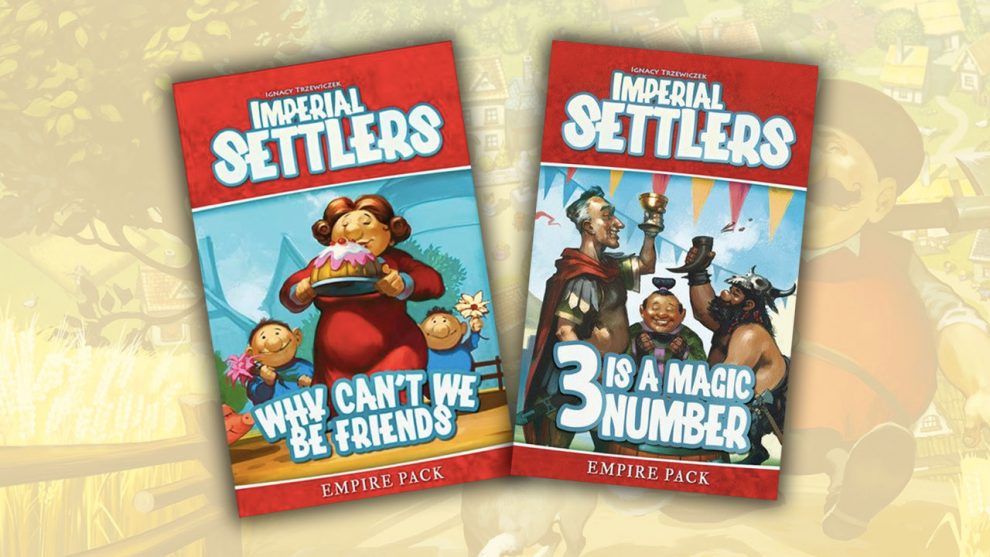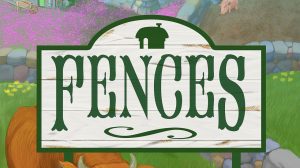Overview
Imperial Settlers, designed by Ignacy Trzewiczek, is a card game of civilization and engine building. Each player selects one of four factions (Romans, Egyptians, Barbarians, or Japanese) and uses that faction’s Faction deck in conjunction with a deck of Common cards to produce resources, acquire more cards, build locations, and to score points. The game is played over a total of five rounds and the person who has accumulated the most points at the end of the game, wins.
In this multi-article series, I am going to discuss Imperial Settlers and all of its expansions. I’ll tell you how they work, how they change the game, and what I think about them. In part one of my Imperial Settlers review, I talked a lot about the base game. In this one, I’m going to turn my focus on the game’s two smaller expansions – Why Can’t We Be Friends (WCWBF) and 3 Is a Magic Number (3IAMN). Since I’ve previously discussed how the game is played, I am just going to discuss what the expansions bring to the game and how they change it.
Make sure you read Imperial Settlers Review – The Base Game – Part 01 to get my take on the base game.
In Imperial Settlers Review – Part Three I discuss the Atlanteans faction and what they add to the game.
In Imperial Settlers Review – Part Four I discuss the Aztecs faction and what they add to the game.
Why Can’t We Be Friends?
Contents
WCWBF is packaged inside of a small tuck box. This expansion adds 55 new cards to the game: 10 cards for each of the four base factions, 13 Common cards, and 2 cards for the solitaire variant (which I am not going to discuss here as I don’t ever play solo games). Aside from the quad-folded rules sheet, these are the only new physical items introduced to the game. Quality-wise, these cards are exactly the same as the cards that were introduced in the base game and this is to be expected.
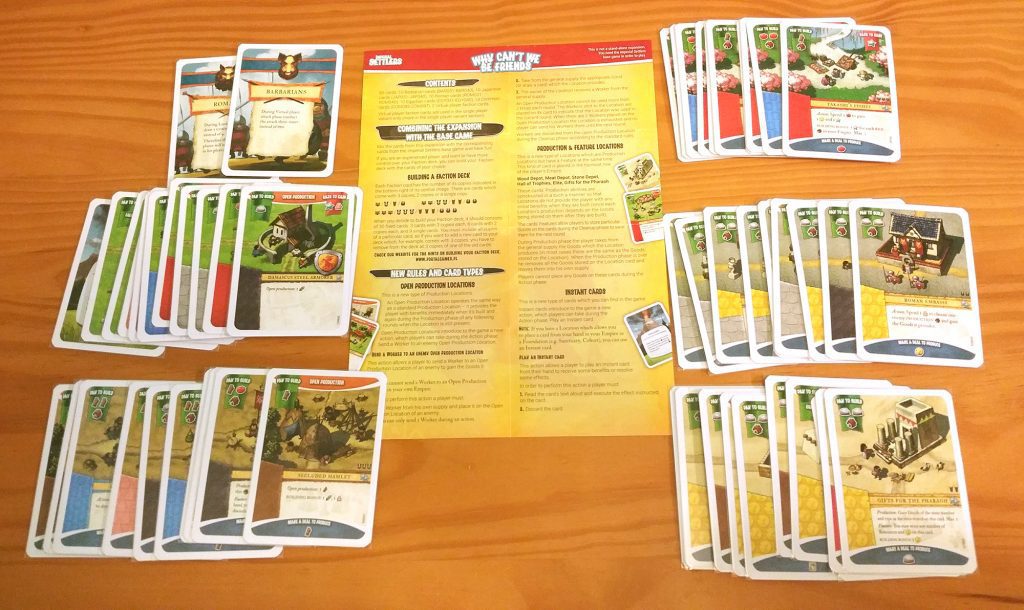
What WCWBF really brings to the table are new ideas and concepts that add an extra layer of depth and strategy to the game overall. So, let’s talk about those…
Pre-Constructed Decks
In the Imperial Settlers base game, there were only two decks that you ever had to think about – your Faction deck and the Common deck. However, with the addition of these new cards, the players now have the option to either toss everything together and just go with it OR they can put together custom made pre-constructed decks. I personally use the lazy, throw it all into the same pile and go with it variant, but it is worth mentioning that these new expansions make pre-constructed deck building a viable thing now.
Open Production

WCWBF introduces a new type of location – the Open Production location. These locations are constructed just like any other location, immediately provide their goods upon being built, and continue to supply those goods during each Production phase. However, these locations are different in that they can also be used to produce goods for your opponents. On their turn, an opponent may place exactly one of their workers onto one of their opponents’ Open Production locations and take whatever goods that location produces. The owner of that location then receives a worker from the supply. Each of these Open Production locations can only be used a total of two times.
Production/Feature
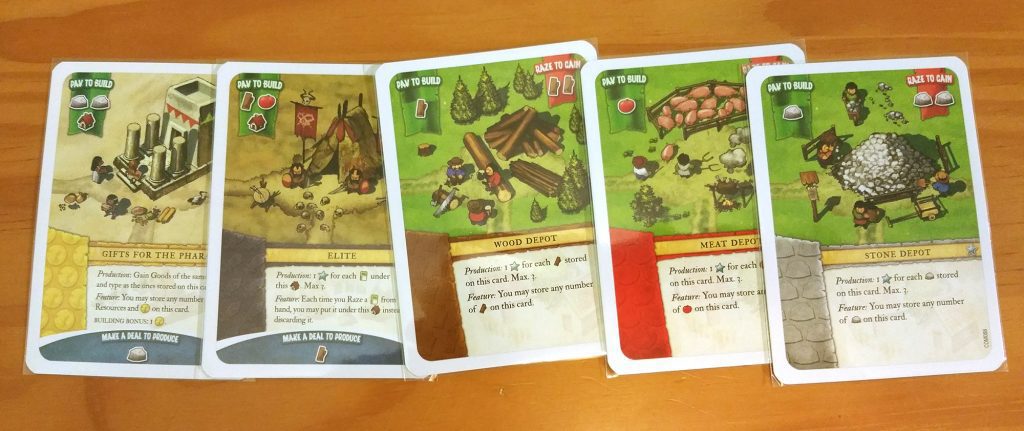
WCWBF introduces another new type of card – the Production/Feature location. These locations are placed into the Production row. Unlike other Production cards, though, these cards do not immediately provide any kind of benefit. Each one of these locations can store a certain type of good on it. When there are goods on top of this card during the Production phase, the player that owns the card will earn a number of goods, resources, or points for each good that is stored on it up to a certain limit. Any number of goods can be stored on the card, but the player will only earn for a certain number of these stored goods. After earning whatever the card produces, the players will move the goods that were stored on it, along with whatever they earned, into their personal supply.
Instants

The last new card type introduced in the WCWBF expansion are Instant cards. Using these cards is easy. They live in the player’s hand just like any other card, but there is no cost associated with playing them. The player simply reads the card out loud, does whatever the card says, and then discards it. If the card is in a player’s hand and that player has an ability that lets them place cards from their hands into their empires as foundations, then the Instant cards can be used for this as well.
3 Is a Magic Number
Contents
Like the WCWBF expansions, 3IAMN is also packaged inside of a small tuck box. This expansion, released after The Atlanteans expansion (which we’ll talk about it an upcoming article), comes with a total of 67 cards: 10 Faction cards for each of the 5 factions, 13 Common cards, and 4 cards for use in the solitaire game. Like WCWBF, these are the only new components introduced to the game. What really sets this expansion apart are the new concepts that it introduces… concepts like:
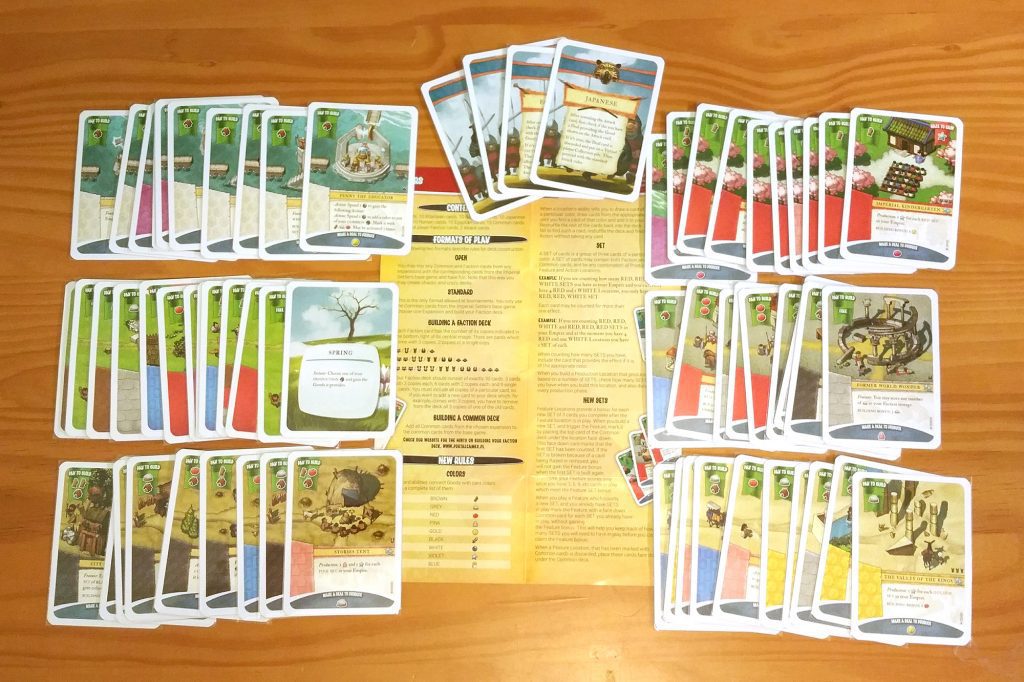
Pre-Constructed Decks
You may be thinking: “Didn’t you already talk about this earlier?” The answer would be an affirmative, but it bears repeating. While it was possible to build your own pre-constructed Faction deck before, you’ve got even more options with this expansion due to simply having more cards to choose from.
Sets
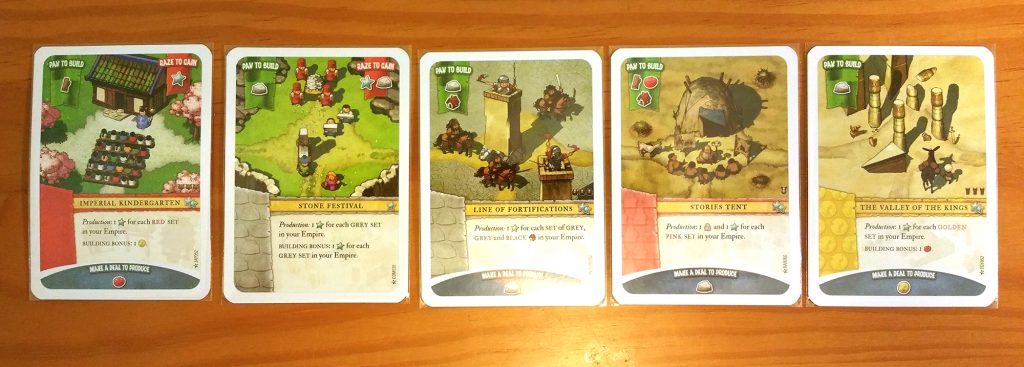
In Imperial Settlers terminology, a “set” refers to some combination of a total of 3 cards. A RED set, for instance, is a collection of 3 red cards. A BLUE, BLUE, BLACK set is a collection of 3 cards – 2 blue and 1 black. Some cards produce things whenever a NEW SET is produced. To keep track of this, a Common card is drawn from the Common deck and placed face down beneath whichever card is counting the existing sets whenever a new set of the specified type is completed.
Color and Goods Association
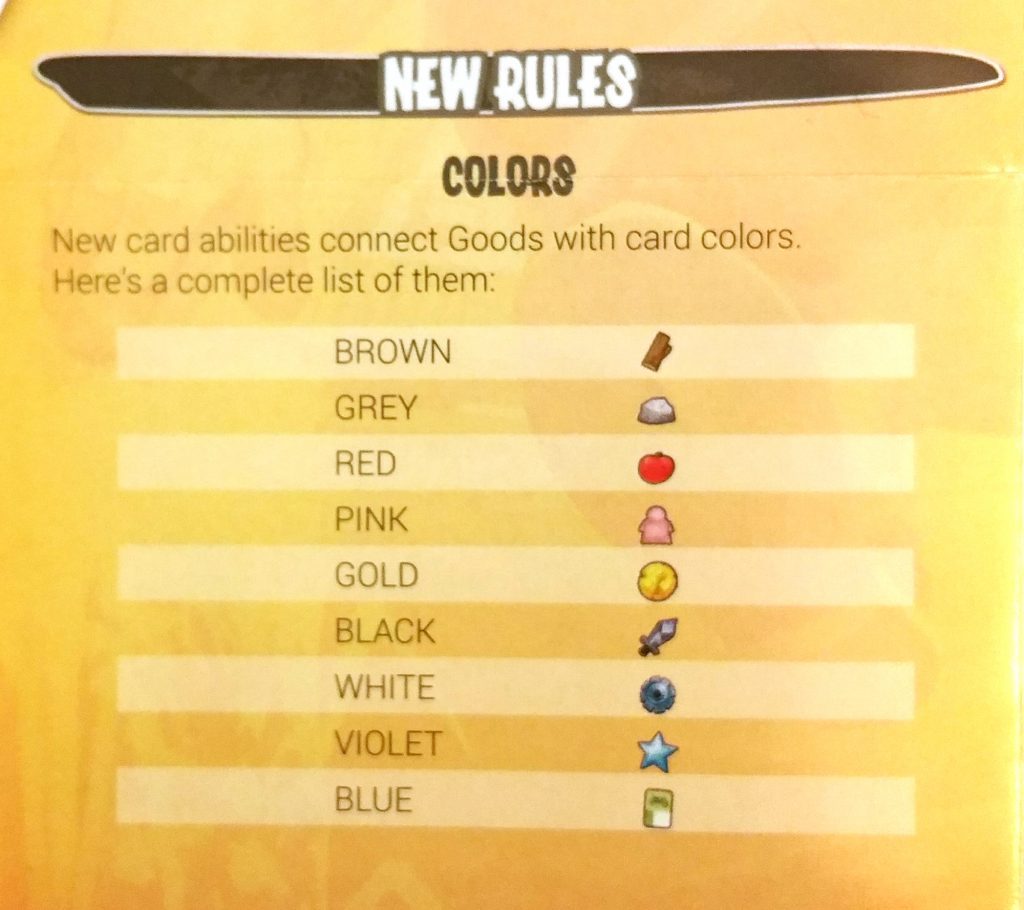
This expansion also creates an association between a card’s color and a specific type of good. For example, yellow is associated with gold while blue is associated with card drawing. Whenever a card mentions drawing goods based on some other card’s color, this is what it is referring to.
Thoughts
If I had to rank the new card types introduced in the WCWBF expansion in order of importance, I would rank them like this: Production/Feature, Open Production, Instant. As I mentioned in my review of the base game, each faction has the ability to carry over exactly one type of good from one round of play to the next. The new Production/Feature locations gives the location’s owner a method of getting around this restriction. Being able to carry over resources from one round to the next is very powerful. As such, the competition to control these locations or prevent others from controlling them can be fierce. This is arguably the best thing about this expansion.
Some would argue, though, that the Open Production locations are the most useful. The ability to gain a resource, at will, that you might not have any access to can be pretty invaluable. But, there’s a tradeoff. Helping yourself means you’re also helping your opponent. These Open Production locations force you to make a decision between helping yourself (and your opponent by default) or forgoing the temporary gain to hinder your opponent. The outcome of the game can sometimes hinge on tiny little decisions like this one.
As for the Instants, there aren’t really enough of them to be of much use. However, the only one of these cards included in the WCWBF expansion – Volcano – is probably one of the most powerful (maybe even broken) cards in the entirety of the Imperial Settlers universe as it gives the player that uses it the ability to remove an opponent’s Faction building from the game. It isn’t razed. It is simply removed from the game. This can be devastating in the right circumstances as there are many faction cards that can provide massive amounts of end game points.
Overall, this is a very well thought out expansion. By adding just a few cards to the game, it changes the environment of the game entirely. Things become even more interesting when you add in the 3IAMN expansion.
The color association, while a neat idea, is pretty underpowered as a concept in this expansion and doesn’t really explode until you add in the Aztecs (which I will talk about in part 4 of this series!). That isn’t to say that it’s not useful. It is in the right circumstances, but on its own, it’s not as useful as it could be. What really makes this expansion shine is the concept of sets. These “set” cards can produce massive amounts of victory points and resources. In the hands of a savvy player that uses these cards well, it can mean the difference between a defeat and a CRUSHING defeat.
My wife and I like these expansions so much that we never, ever play without them. Without these expansions, our average scores ran up into the low 40’s to upper 50’s range. With these expansions thrown in, though, we average well over 100 points a game now. In fact, just the other night, my wife managed to pull off a 146-117 defeat using nothing but the base game and these two expansions alone. WCWBF and 3IAMN are two expansions that are so easy to incorporate and so easy to use that there’s no reason to NOT use them.
But just you wait. It gets better when you add the Atlanteans and Aztecs to the game – not to mention, a lot more complicated. We’ll discuss these expansions in part 3 and 4!
What do you think about Imperial Settlers? Give us your opinions about what you like and/or dislike about the game in the comments below!


